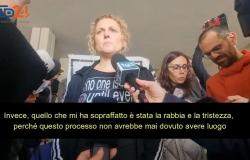Read the contents of the papyri of Herculaneum thanks to artificial intelligence: three very young students succeeded, winning the Vesuvius Challenge, a prize of 700 thousand dollars.
Papyri of Herculaneum deciphered with Artificial Intelligence
A library famous throughout the world, that of the Herculaneum papyrus, buried fromeruption of Vesuvius in 79 AD: a sea of information, however, largely impossible to decipher. The papyrus scrolls, in fact, were almost charred from the ashes of the volcano and unrolling them would mean destroying them into thousands of fragments.
This was the biggest challenge for the participants of the Vesuvius Challenge: a machine learning challenge launched by Nat Friedmanscholar and investor who has taken up the dream of a large group of universities, research institutes and libraries from all over the world to read what is contained in over 600 papyri.
The treasure was found in 1750 by a farmer who, digging a well, came across a marble slab: the excavations revealed that it was the floor of a sumptuous villa, belonging to the father-in-law of Julius Caesarwhich preserved within it a vast library which the ashes had, at the same time, carbonised and preserved for centuries.
Vesuvius Challenge: three very young “geniuses” awarded
All efforts to open the papyri proved useless, even leading to the fragmentation of numerous scrolls: until, in 2015, Dr. Brent Seales from the University of Kentucky was able to “look” into the scrolls with an x-ray tomography, essentially a CT scan.
In 2023 the Vesuvius Challengethe challenge that calls together artificial intelligence and machine learning experts to apply these innovative technologies to the decoding of papyrus.
Three very young students presented the most complete results: Youssef NaderEgyptian doctoral student in Berlin, Luke Farritor21 years old, SpaceX intern and Julian Schilligerrobotics student in Zurich.
What is written in the Herculaneum papyri
The extraordinary team won the challenge, presenting to the commission 4 passages of 140 characters each, with at least 85% of the characters recoverable: an unthinkable result on the eve, when the organizers estimated it was impossible to recover more than 30%.
These AI geniuses then delivered 11 columns for a total of over 2000 characters deciphered, taking home the prize from 700 thousand dollars. The results were then passed to papyrologists who gave meaning to the characters: it would be a text by Philodemus, an Epicurean philosopher, resident in the villa.
The lyrics are about music, food, and how to enjoy the pleasures of life: supreme good of Epicurean philosophy. In these two fragments from two consecutive columns of the scroll, the author is concerned with whether and how the availability of goods, such as food, can influence the pleasure they provide.
In fact, we read in the text from 2000 years ago: “as also in the case of food, we do not immediately believe that things that are scarce are absolutely more pleasant than those that are in abundance”. This would still be the first 5% of deciphered content, but the method seems to be so valid that it gives researchers hope to reach 85% by the end of the year.




